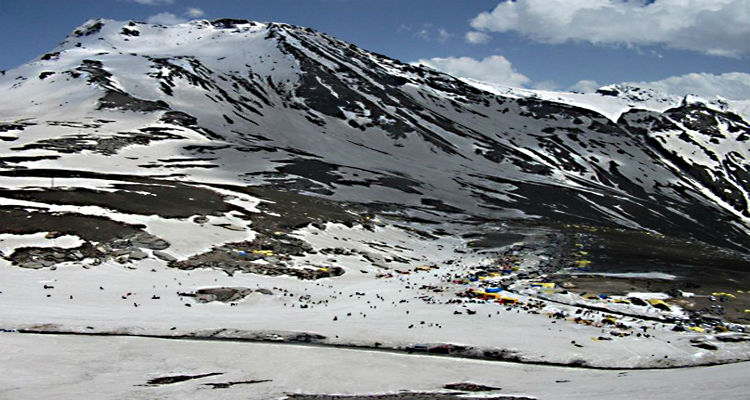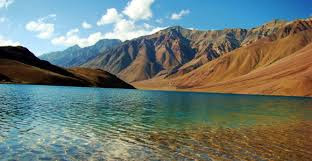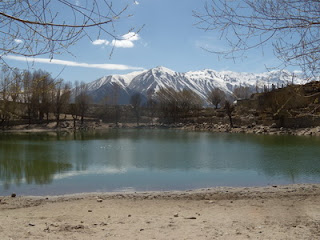A fresh look at Shimla’s popular Chadwick Falls :
SHIMLA :
If you study the ‘Times of India’, then freshly,
the newspaper mentioned the failing beauty of Shimla’s Chadwick Falls, bottomless
in the Glen Forests. The sighted reason was normal unawareness of the Himachal
Pradesh Tourism Department. So, we consideration to give our readers a glance
of the present condition of this often mentioned popular spot –the Chadwick
Falls. Take a seem at the fresh photograph, video, with past backdrop. We will
come to the grievance part in the final paragraph.
The place could be developed, not by chopping the trees, but by making the exiting one a bit more adorable with a few slight modifications. Perhaps, leveling the ground in front of it, building a boundary around the waterfall that contains the clean water, a couple of benches, couple of more dustbins or a bigger one would do.
Shimla city had expanded a lot in the past recent years. A lot of concrete has replaced the green belts. Still, for now, Shimla do has some really tempting natural offerings to feed the soul of anyone who is dying to get out of the crowd and artificially decorated Shimla Bazaar or the Shimla Mall. There are wonderful marvels of British era architecture like the Indian Institute of Advance Studies. But, the real gift is the serenity that one can find in the isolation of Shimla’s dense forests . You don’t have to drive too far from the sophistication of the city. The Glen Forest of Shimla is one good place for those who seek to be in touch with nature. To be specific, amidst this dense forest in Shimla, the Chadwick Falls is the best spot to explore. It’s just 7 KM from Shimla, and the same is 4 KM if you start from Summerhill (HP University). From here, the walking distance is hardly more than an hour.
As you drive down the road, the scenery appears to have changed suddenly, and you see crop-fields, scattered village houses, the cattle etc. Sometimes, it’s hard to spot any human around.
About 800 meters to the west of the Chadwick Falls, there is a beautiful village called ‘Huen’, in which the word Huen means snow in the local language. The place is a sight of pure village life in the suburbs of Shimla. The village is a great visual treat itself.To reach the waterfall, you take a narrow path that passes through a dense forest.
This passage is a trodden path, covered with leaves, and surrounded by trees and bushes. If you are alone, the sounds of the forests could even give you freaky goosebumps.It’s not uncommon to expect leopards in such dense forest, near a water source of water where these animals could quench their thirst. The villagers will warn you to return back before the sun goes down. The chances of a leopard encounter are higher after it gets dark.
You don’t get a clue of how far is the waterfall unless the sound of the falling water starts to near your ears? Soon, you get a glimpse of it across the woods, framed with greenery.It might appear trivial as compared to the giants around the world, if you have already seen some. Otherwise, it’s an interesting spot, especially so near to the city.
Water slides down from a channel at an angle of almost 90 degree from the top of a rock, which is approximately 80-100 meters high. That’s not huge, but its serene and the sounds of shimmering water makes it a hypnotic experience. That applies mostly to the loners. On the other side of the same frame, it’s a good, safe spot for an outdoor drink party with your friends.
We spotted two guys enjoying their beers while they sat on a rock right in front of the waterfall.
They weren’t drunkards. They were decent, nature loving guys. They talked to us, offered the seat they had occupied thinking we are tourists.They asked us why it’s named as the Chadwick falls. One of the guys related it to a scientist named Chadwick, who had made some very relevant invention regarding the atomic structure. He told us that Mr. Chadwick is said to have committed suicide by jumping off the top of the rock.
Does that sound true to you? Well, actually the name Chadwick is said to have evolved as the English people found it hard to pronounce the original word ‘Chidku Jhaar’. A waterfall is called ‘Jhaar’ in the local dialect, and yes, once there did live renowned scientists named James Chadwick (20 October 1891 – 24 July 1974). He was an English physicist who had won the 1935 Nobel Prize in physics for his discovery of the neutron in 1932. However, he never even visited Shimla ever. Moreover, he died in his sleep at his place. So, definitely, there isn’t any question of a suicide.The real word ‘Chidku’ is referred to the sparrow in the local dialect. The waterfall is so high that only sparrows or a bird could reach the top. Thus, it was named as ‘Chidku Jhaar’.
Then, there is a famous folklore telling about a demon who was imprisoned by the local gods behind the big rock after the villagers prayed these gods to free them from his nuisance. The locals believe that the water flows down from the mouth of the demon, or, at least, it appears to be so. The Tourism Department has put a description board on the roadside that describes the waterfall in both English and Hindi. However, the one in English talks of an Englishman without any details, which are omitted in its Hindi version. That’s confusing, of course.
Anyway, the place is awesome for those who seek to get in touch with the nature. We aren’t sure if our statement would apply if it’s crowded there. It’s a popular tourist spot in Shimla according to the Tourism Department. The name of the village is there in every brochure talking of tourism in Himachal.
The sad thing is that this very enchanting, serene and beautiful place is left at its own while the Govt. continue inviting outsiders (tourists) to visit it. The Tourism department must take the responsibility to maintain and sustain it. Otherwise, they must stop advertising it. If you want to leave it completely on itself, then exclude the crowd as well.
The only rain-shelter tells of Indian ways to show respect to a beautiful waterfall in its neighborhood. It’s actually adding ugliness to the scenery here. Isn’t it supposed to be matching to the whole scene, something more adorable?The place could be developed, not by chopping off the trees, but by making the exiting one a bit more adorable with a few slight modifications. If not more, then, at least, keep it clean. Perhaps, leveling the ground in front of it, building a boundary around the waterfall that contains the clean water, a couple of benches, couple of more dustbins or a bigger one.
We are sure, for the main drainage, through which the water flows down the place, could be more attractive if you regularly remove the garbage stuck in between the rocks and get rid it of the bushes.We aren’t beautification experts, so we better leave it on the authorities and the public to throw some good ideas to develop our precious and beautiful Chadwick Falls.






































































